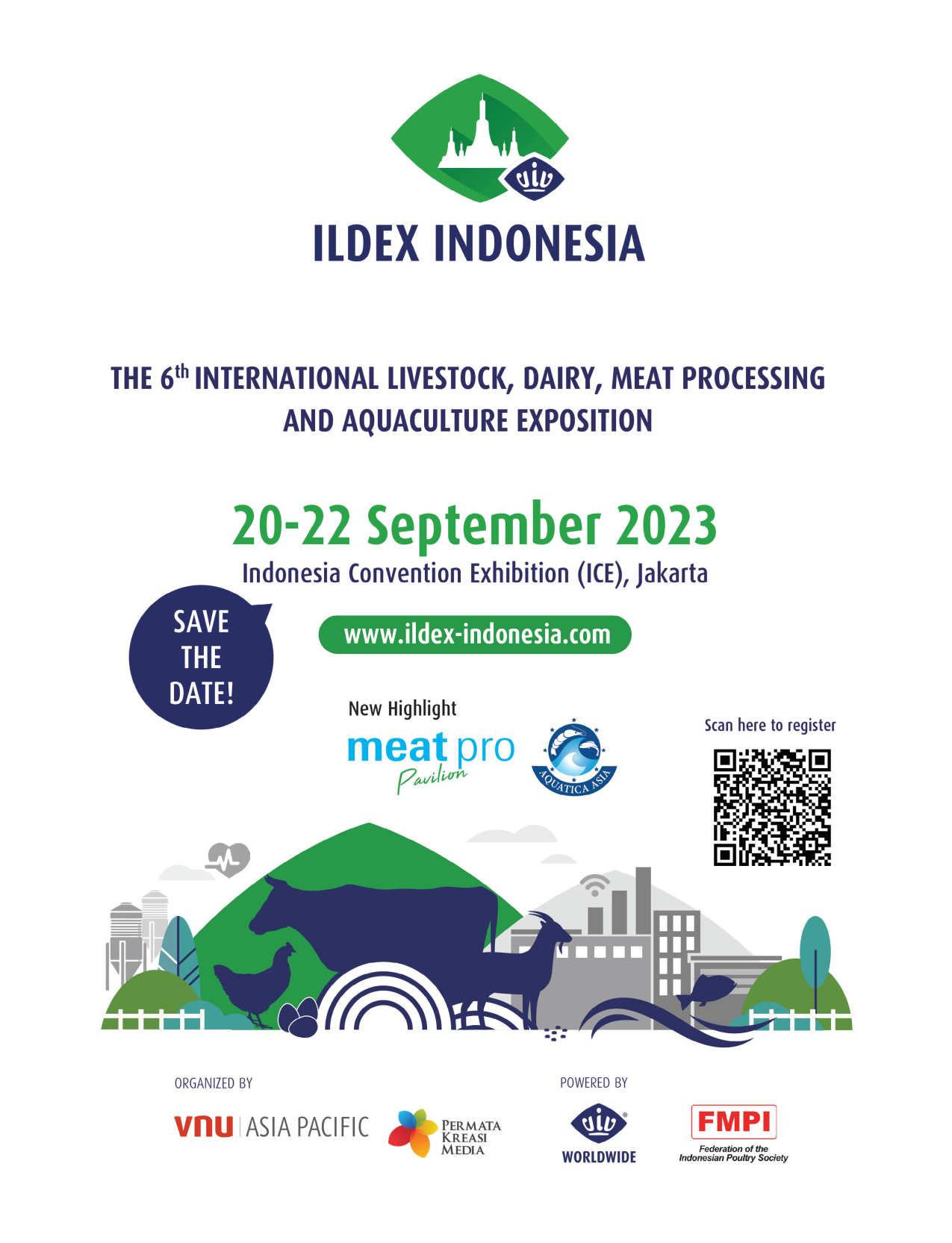aquafeed sustainability with insects
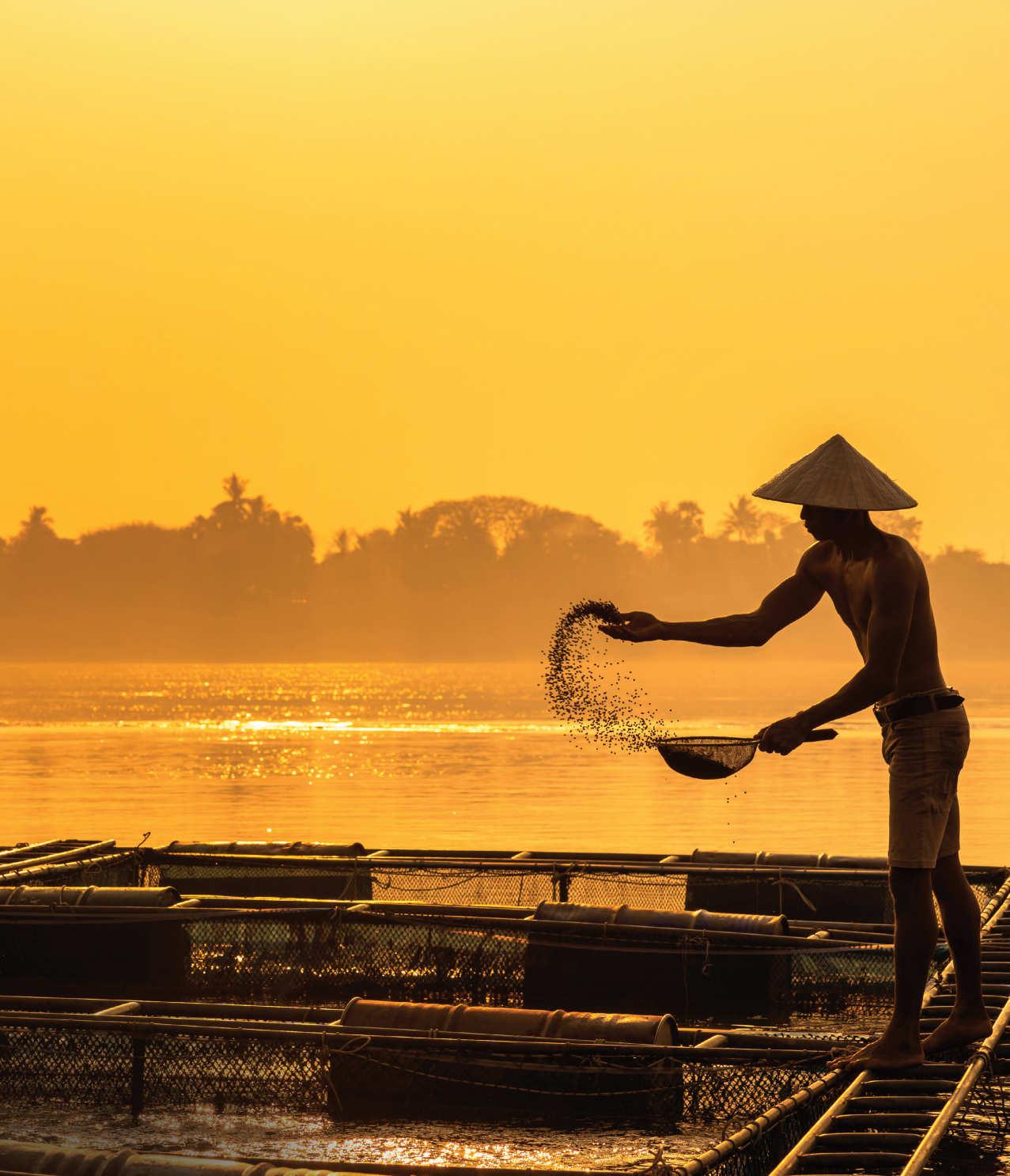
Crops:

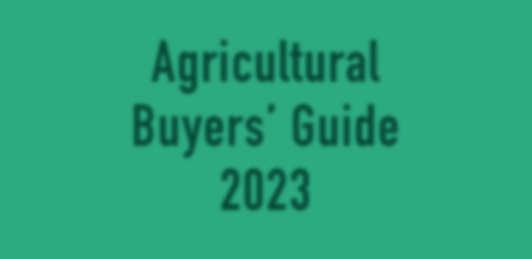
Oil palm seeds sprouting to success

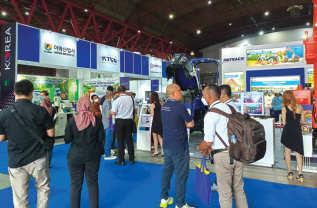
Poultry: AI propels poultry industry into an automated future
Livestock: Standing united against epidemics
VOLUME 41 ISSUE 3 2023 www.fareasternagriculture.com
Enhancing
INAGRITECH 2023 preview - p5 Agricultural Buyers’ Guide 202 3
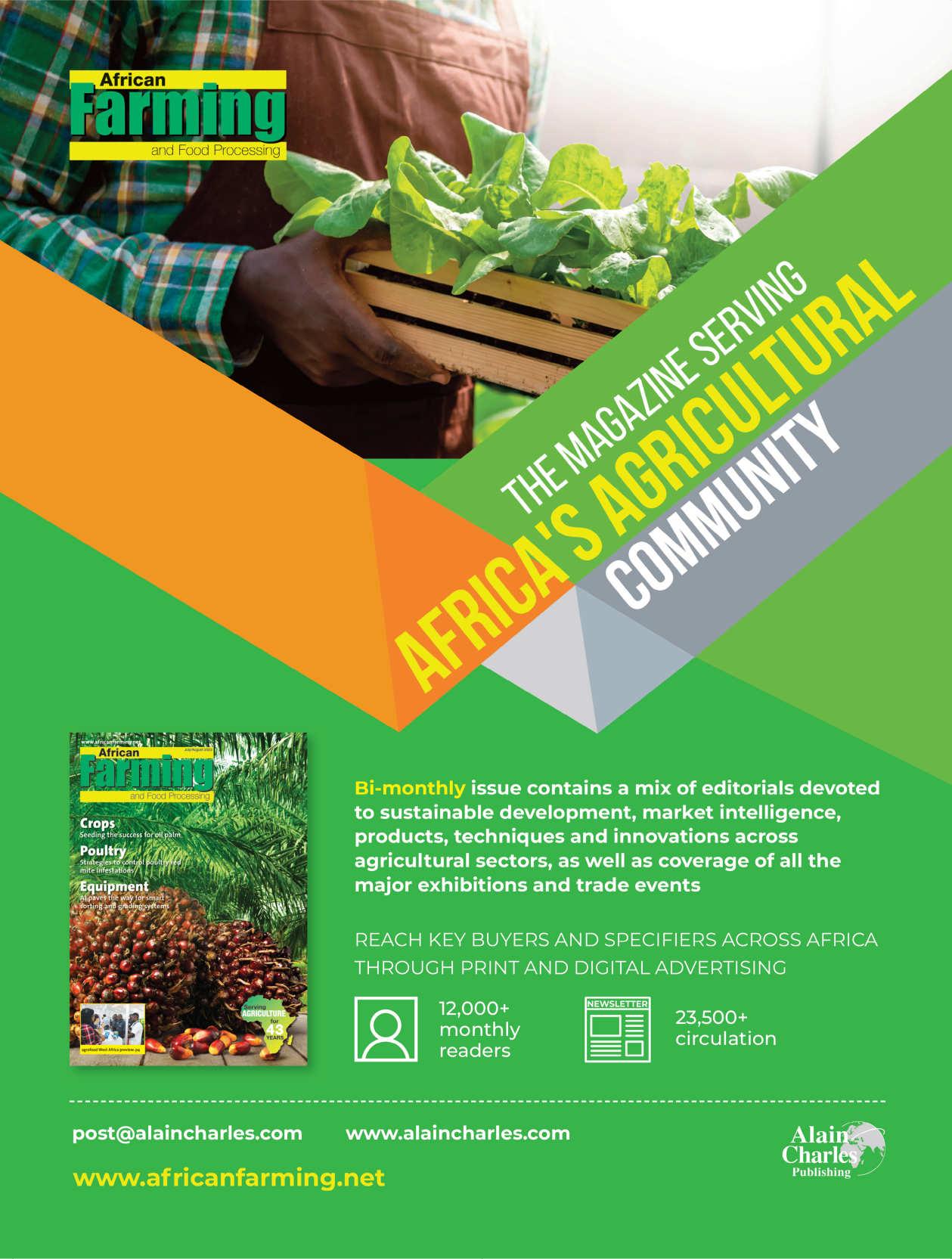
Editor: Madhuri Ramesh
Email: madhuri.ramesh@alaincharles.com
Editorial and Design team:
Prashanth AP, Sania Aziz, Miriam Brtkova, Robert Daniels, Shivani Dhruv, Matthew Hayhoe, Leah Kelly, Rahul Puthenveedu, Madhurima Sengupta, Louise Waters and Minhaj Zia
Publisher: Nick Fordham
Head of Sales: Vinay Nair
Email: vinay.nair@alaincharles.com
Magazine Manager: Richard Rozelaar, Tel: +44 207 834 7676

Email: richard.rozelaar@alaincharles.com
India TANMAY MISHRA +91 98 80075908 tanmay.mishra@alaincharles.com

Nigeria BOLA OLOWO +234 8034349299 bola.olowo@alaincharles.com
South Africa SALLY YOUNG + 27 (0) 824 906 961 sally.young@alaincharles.com
Head Office: Alain Charles Publishing Ltd University House, 11-13 Lower Grosvenor Place London SW1W 0EX, United Kingdom
Phone: +44 20 7834 7676 Fax: +44 20 7973 0076
Middle East Regional Office:
Alain Charles Middle East FZ-LLC
Office L2- 112, Loft Office 2, Entrance B, PO Box 502207
Dubai Media City, UAE
Phone: +971 4 448 9260 Fax: +971 4 448 9261
Production: Rinta Denil, Ranjith Ekambaram, Nelly Mendes and Infant Prakash
Email: production@alaincharles.com
Subscriptions: circulation@alaincharles.com
Chairman: Derek Fordham
Printed by: Buxton Press
Printed in: July 2023
Far Eastern Agriculture (ISSN 0266-8025)
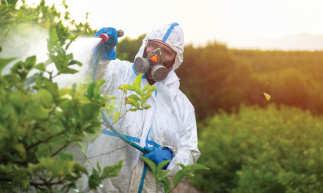
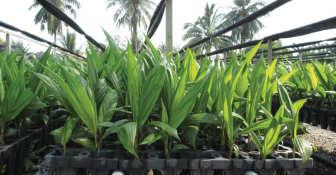
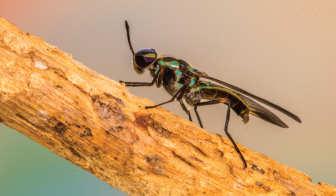


FAR EASTERN AGRICULTURE • Issue Three 2023 CONTENTS Cover Image :
Stock Serving the world of business Compact Seeds and Clones SA..................................................................................................................9 Eurofeed Technologies S.p.a...................................................................................................................13 Henke-Sass, Wolf GmbH..........................................................................................................................11 NECTRA......................................................................................................................................................21 Omex Agrifluids Ltd..................................................................................................................................15 Unipoint AG..............................................................................................................................................22 VNU Exhibitions Asia Pacific Co. Ltd........................................................................................................24 Advertisers Index AGENDA 04 Calendar and industry updates 05 Interview with INAGRITECH project manager Santi Hong 06 Industry events roundup POULTRY 08 Poultry gets automated treatment LIVESTOCK 10 Standing in unity against epidemics AQUACULTURE 12 Insects emerge as future building blocks of aquafeed CROPS 14 Sowing the seeds for oil palm success EQUIPMENT 18 Hayleys Agriculture to enhance Sri Lanka’s grain processing industry 19 Electric tractors to reduce farm emissions TECHNOLOGY 20 Enhancing efficiency with electrolytic sprayers 3 www.fareasternagriculture.com
Adobe
AGENDA
EVENTS 2023
JULY
26-28
Indo Livestock
Surabaya, Indonesia
https://indolivestock.com/
AUGUST
23-25
INAGRITECH 2023
Jakarta, Indonesia
https://inagritech-exhibition.net/
SEPTEMBER
06-08
VIV Nanjing 2023
Nanjing, China
https://www.vivchina.nl/
20-22
ILDEX Indonesia
Jakarta, Indonesia
https://www.ildex-indonesia.com/
OCTOBER
04-06
Palmex Indonesia
Medan, Indonesia
https://palmoilexpo.com/
11-13
Vietstock
Ho Chi Minh City, Vietnam
https://vietstock.org/
16-19
International Rice Congress & Trade Show
Manila, Philippines
https://irc2023.irri.org/
27-29
FeedTech Expo 2023
Pune, India
https://feedtechexpo.com/
International livestock, feed and dairy industry descends on Indonesia
THE 16TH EDITION of the Indo Livestock Expo & Forum will arrive at Grand City Convex, Surabaya in Indonesia, from 26-28 July 2023 to serve as a platform for innovators, thought-leaders and experts from around the world to meet, network and discuss the challenges the industry is facing along with the latest developments.
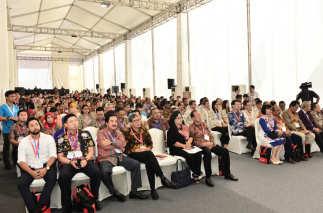
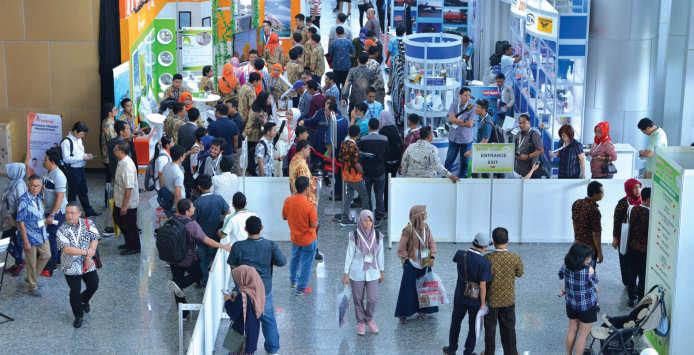
The exclusive livestock B2B trade show will welcome more than 10,500 visitors from 23 participating countries. These attendees will enjoy and learn from more than 200 exhibitors who will present their livestock solutions and services across a 5,169 sq m demonstration space.
Those who participate will also have the chance to learn from forums, workshops and seminars; engage with free technical product presentations; and make personal contacts to establish their networks in the industry in order to advance their business for years to come.
The exhibiting companies will cover a range of key topics for the Asian
agricultural sector. Visitors can expect to see companies presenting in regards to air equipment, biological fertilisers, breeding, aqua feed, batteries, egg packaging, antibiotics, disinfectants, drying equipment, climate control, energy saving, consulting, animal protein, artificial insemination, freezing, broiler farms, automatic cleaning and feeding equipment, diagnostic kits, incubators, embryos, a range of feed equipment and solutions, information systems, management software, processing and packaging, storage systems and much more.
Previous editions of the show have proved incredibly fruitful for those in attendance. In 2019, for example, 87% of exhibitors said the show achieved or exceeded their expectations; 90% of exhibitors were satisfied with the quality of visitors; and 93% rated the overall service of the organiser, Napindo Media Ashatama, as good or very good.
Part of this success, according to exhibitor feedback was the wide variety of visitors from overseas to local farmers and traders.
Napindo Media Ashatama are hoping to achieve another successful conference this year and is supported by a number of notable organisations including: WPSA Indonesia, Shrimp Club Indonesia, ARPI, ISPI, GPMT, and many more.
For more information, visit the website at: https://indolivestock.com/
More than 200 exhibitors will present at the show.
4 www.fareasternagriculture.com FAR EASTERN AGRICULTURE • Issue Three 2023
Image Credit: Napindo Media Ashatama
Visitors will learn from a variety of forums, workshops and seminars.
Image Credit: Napindo Media Ashatama
A forum for the agricultural industry to grow and develop
Far Eastern Agriculture speaks with Santi Hong, INAGRITECH project manager, to gain insight into the upcoming trade show INAGRITECH 2023, set to take place in Jakarta, Indonesia, from 23-25 August.
Far Eastern Agriculture (FEAG): How long has GEM Indonesia organised INAGRITECH?
Santi Hong (SH): INAGRITECH will return with its 11th edition in 2023, becoming the biggest smart agricultural technologies and solutions exhibition in Jakarta, Indonesia. On an average, exhibitors reach up to 200-250 companies, attracting more than 8,000 global visitors in three days.
FEAG: Can you highlight the primary objectives of INAGRITECH 2023?
SH: INAGRITECH 2023 aims to achieve several objectives to facilitate the agricultural industry between suppliers and users. These objectives may include:
• Networking and business opportunities: INAGRITECH 2023 provides a platform for suppliers and users in the agricultural sector to connect and establish valuable business relationships. It encourages networking among industry professionals, creating opportunities for collaboration, partnerships, and trade.
• Exhibition and showcase: the event showcases the latest innovations, technologies, and products in the agricultural sector. Suppliers can present their offerings to potential users, allowing them to demonstrate the value and benefits of their products or services.
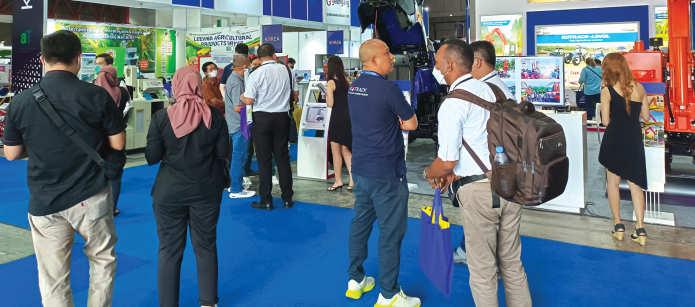
• Knowledge sharing and education: INAGRITECH 2023 may include conferences, seminars, and workshops where experts and thought leaders share insights, trends, and best practices in the agricultural industry. These educational sessions aim to enhance the knowledge and skills of attendees, enabling them to
make informed decisions and improve their operations.
• Market access and expansion: the event provides a platform for suppliers to showcase their agricultural products and services to a wide range of potential users. This exposure can lead to increased market access and opportunities for expansion into new regions or customer segments.
• Technology transfer and adoption: INAGRITECH 2023 may focus on promoting the adoption of advanced agricultural technologies. Suppliers can demonstrate the efficiency, productivity, and sustainability benefits of their technologies, encouraging users to integrate them into their operations.
• Collaboration and partnerships: INAGRITECH 2023 encourages collaboration and partnerships between suppliers and users. It serves as a platform for fostering relationships and identifying opportunities for joint ventures, research and development collaborations, and knowledge sharing initiatives.
FEAG: Can you mention some notable industry experts who will be attending the show this year?
SH: Start-ups, engineers, procurement managers, dealers, spare parts managers, and associations meet here to learn about the latest developments and innovations in the field of agricultural machinery and related sectors.
FEAG: Can you provide some insight into the innovations that exhibitors are planning to showcase during the show?
SH: Since our show is known for machinery and technology, our main highlight is in tractors and other technology such as:
• Precision agriculture: this involves the use of technologies such as GPS, remote sensing, and data analytics to optimise farming practices;
• Agricultural drones: drones equipped with imaging sensors and cameras enable farmers to monitor crop health, detect diseases, and assess field conditions from above;
• IoT and farm management systems: the Internet of Things (IoT) has revolutionised farm management by enabling the connectivity of various devices and sensors;
• Vertical farming: involving cultivating crops in stacked layers or vertically inclined surfaces in controlled environments.
FEAG: What are the travel and accommodation arrangements that have been planned for visitors?
SH: We have two official hotel partners around the venue to make it easier for our exhibitors/visitors with accommodation. Both hotels are located within the venue area. The first hotel is located at a walking distance from the venue, taking only around three minutes to reach the venue. The second hotel has shuttle facilities to help exhibitors/visitors travel to and from the venue. ■
FAR EASTERN AGRICULTURE • Issue Three 2023 INTERVIEW 5
www.fareasternagriculture.com
INAGRITECH returns with its 11th edition in 2023.
Image Credit: INAGRITECH
ILDEX Indonesia 2023: The must-go place to tackle the largest economy in Southeast Asia
THE SIXTH INTERNATIONAL livestock, dairy, meat processing and aquaculture exposition, ILDEX Indonesia 2023, will be held from 20-22 September 2023 at the Indonesia Convention Exhibition (ICE) in Jakarta, Indonesia. Being Jakarta’s largest exhibition and convention centre, ICE reflects ILDEX’s ever-expanding attitude.

The event, organised by VNU Exhibitions Asia Pacific, is a joint venture between Jaarbeurs from the Netherlands and TCC Exhibition and Convention Centre from Thailand. This specialist trade fair presents a variety of advanced business solutions for the livestock and aquaculture industries.
Moreover, ILDEX Indonesia has always proven to be the ideal platform to meet and connect with new and existing clients in the region. Over the years ILDEX Indonesia has become the must-go place to tackle the largest economy in Southeast Asia. ILDEX Indonesia is a key professional event to meet valuable clients, knowing that people walking inside the hall are customers and important buyers looking for business opportunities.
The event also enables exhibitors to
increase their brand awareness and positioning in the world’s fourth most populous nation. Along with building current customers comes the opportunity to also meet new potential clients. In addition, exhibitors can also test new market solutions, collect data intelligence and feedback, as well as explore developing markets and opportunities for innovations.
With a large and dynamic population, Indonesia has emerged to come at the forefront of international trade and become
a very attractive target for international investments. ILDEX Indonesia helps unlock the potential of the ASEAN market by allowing exhibitors to build their strategy and properly present their brands to future customers. Apart from the exhibition area, the conference and seminar programmes are the other highlights of ILDEX Indonesia, where leading professional guest speakers share their insights on various important topics such as breeding programmes and animal health.
IRC 2023: Accelerating transformations in the rice sector
THE SIXTH INTERNATIONAL Rice Congress (IRC 2023) will be held from 16-19 October 2023 at the Philippine International Convention Centre (PICC) in Manila, Philippines, gathering stakeholders from across the world to discuss a research agenda that will drive the development of solutions to accelerate urgently needed transformations in the rice sector, while also providing an inclusive and safe space to share and debate new ideas and suggestions, to forge partnerships, and explore opportunities. The themes of IRC 2023 include:

• Fast-tracking genetic solutions and varieties.

• One-health and nutritious rice value chains.
• Digital solutions across scales.
• Nature-based farming solutions.
• Transforming rice landscapes for climate resilience.
• Partnerships for scaling and impact.
• Sustainable global rice economy.
• Societal equity, equality, and prosperity.
IRC 2023 will also host various events and activities of interest to all stakeholders, from the scientific and research communities to NARES and regional development organisations. Private sector
groups from global corporations to agripreneurial startups will find a platform to showcase their innovations, build their networks, and secure partnerships and investments. NGOs and farmer groups will also have an opportunity to be heard and their challenges addressed.
AGENDA
6 www.fareasternagriculture.com FAR EASTERN AGRICULTURE • Issue Three 2023
Image Credit: ILDEX Indonesia
Image Credit: IRRI
IRC 2023 is expecting more than 2,000 deligates representing the entire rice value chain.
ILDEX Indonesia presents advanced business solutions for livestock and aquaculture industries.
Vietstock 2023 kicks off its first activities, promises to bring practical values to Vietnam’s livestock industry
ACCOMPANYING THE VIETNAMESE livestock industry for nearly 20 years, Vietstock officially became an annual exhibition, Vietstock version 2023 with special programmes, promising to bring to Vietnam’s livestock industry many practical values.
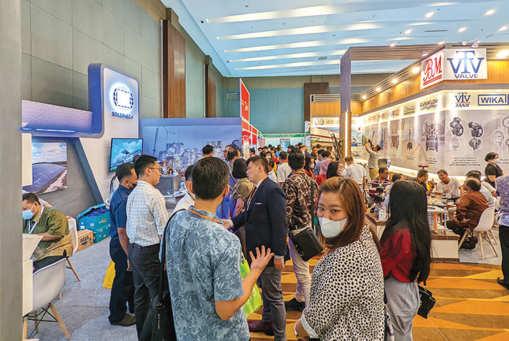

At Vietstock 2023, businesses will have access to the most modern and effective business connection platform. Vietstock’s business matching programme allows businesses to update online; profile; products/technology; contact info, while also providing full features for businesses to ‘beautify’ their profiles, ready to welcome customers to visit online.
Vietstock also aims to popularise innovative solutions and latest techniques for the livestock industry. Hence, specialised conferences and seminars are organised by Vietstock throughout, before and at the exhibition. Moreover, through these seminars and networking events, Vietstock 2023 aims to promote cooperation and links between businesses; create a foundation for value chain development and advanced agricultural models.
Businesses will also have the opportunity to ‘introduce’ their most typical products and services to customers and partners in the livestock industry. Vietstock 2023 further cooperates with Agricultural Extension Centres, sub-departments of veterinary medicine in localities to organise sightseeing programs, detailed instructions and transportation support for livestock households in remote areas to the exhibition.
In addition, World Egg Day which is celebrated worldwide on
the second week of October every year, takes place at the same time as the Vietstock exhibition. The Eggcellent Theatre at Vietstock will therefore conduct many activities and events such as: Egg industry conference; Egg Showcase; Handing out eggs for free; competitions, performances and more.
Vietstock 2023 is also held concurrently with Aquaculture Vietnam 2023 – Vietnam’s international Aquaculture industry event.
PALMEX Indonesia 2023: Showcasing the latest developments in the palm oil industry
THE 13TH PALMEX Indonesia 2023 will be held from 4-6 October 2023 at the Santika Premiere Dyandra Hotel and Convention in Medan, Indonesia.
Being the only specialised Palm Oil event in Asia, PALMEX Indonesia 2023 will bring together an international congregation of both upstream and downstream palm oil companies, along with its supporting industries gathered in the capital city of North Sumatera, Medan to showcase the latest developments in the palm oil industry.
North Sumatera, which is home to one of Indonesia’s largest concentration of oil palm plantations, also has a number of supporting facilities such as palm oil processing plants, thus making its capital Medan, the perfect venue for the show. This unique event seeks to educate the public on the importance of the palm oil industry in Indonesia and the future trends of palm oil in the region. More than 7,000 industry professionals from more than 10 countries are expected to turn up at the event. The international character and regional audience of PALMEX Indonesia provides unparalleled marketing, education and networking opportunities.
Exhibiting at the event also provides companies an opportunity to announce and educate the public about their new products, technologies and discoveries, roping in all senior regional palm oil
industry specialists, procurement managers, upstream producers and decision makers. In addition, the show will host a conference programme themed ‘Innovations and collaboration for a sustainable palm oil future.’
FAR EASTERN AGRICULTURE • Issue Three 2023 AGENDA 7 www.fareasternagriculture.com
Vietstock 2023 has officially kicked off its first activities.
Image Credit: Vietstock
PALMEX Indonesua is the world’s largest palm oil event at the heart of the industry.
Image Credit: Palm Oil Expo
Poultry gets automated treatment
Advanced technology and the assistance of artifical intelligence is propelling the poultry processing industry into an automated future.
THE ART OF poultry processing can be an arduous challenge, but one that is being made significantly less so due to the developments of advanced automation within the industry. Automation has the ability to address the challenges posed by the laborious process, as well as harness the potential to improve efficiency, reliability and predictability of the processing operations.
The North American poultry market in particular is gearing up to extend the use of automation in food processing, however, in order to implement a successful automated process, a workforce must still be present within the processing plants. Systems still have to be implemented, supervised, operated and maintained by people which is aiding the delay in making a fully automated processing system become the industry standard.
Along with automation comes the challenge of digitisation as software plays a critical role in the modern poultry processing industry. Software can range from controlling and monitoring production equipment and machinery to managing inventory and supply chain logistics, which presents an entirely new host of

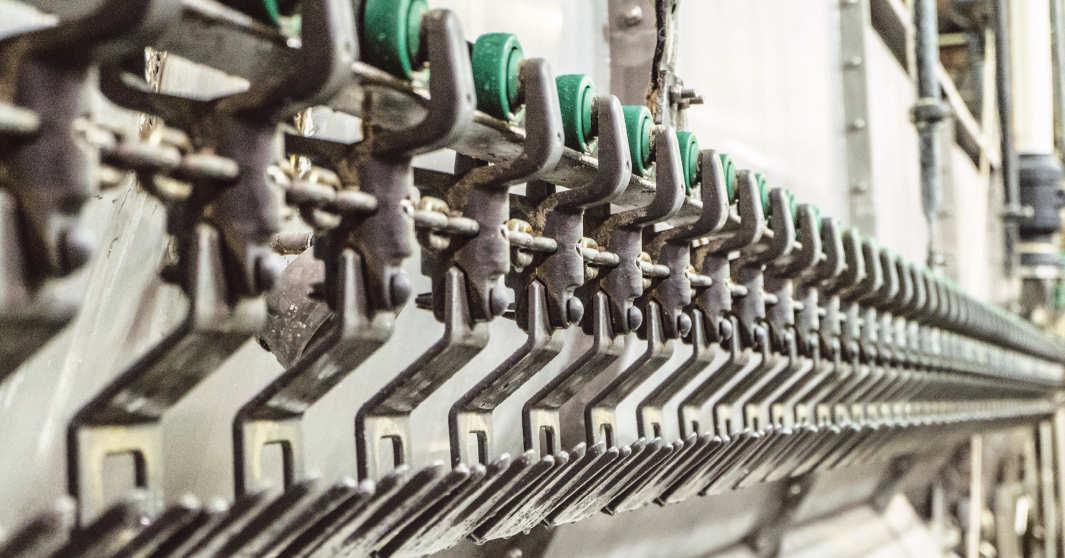
challenges in the form ensuring the correct use of data. Each automated piece of equipment contains a great deal of detailed data. However, isolated machinery only provides isolated information, meaning it can be impossible to combine and analyse the information from different sources for a complete view of the production process, limiting the opportunities in identifying inefficiencies.
Marel, a leading food processing company, has created a magnitude of software solutions to mitigate against the challenges presented by automation. The Innova platform offers many modules that can manage the inventory and supply chain logistics while helping optimise the flow of materials, including tracking inventory levels, coordinating transportation, and ensuring end-to-end traceability within the plant. During the Poultry Tech Summit 2022, Jay Russell, Marel key account manager, said, “By connecting all of our equipment and using the data it generates, we increase the level of consciousness in the industry. An integrated process flow enables realtime adjustments to the production process to improve profitability.”
Marel is one of the pioneering food processing companies that has implemented automated technology to transition away from manual processing systems. The first step towards that journey is for plants to be equipped with an overhead conveyor, stunner, scalder and a defeathering system to allow for the processing of a larger quantity of birds. Processing plants ranging from 500 to 2,000 bph can all benefit from the aforementioned equipment, it just requires added modules or the next grade of systems to cater for the increased capacity.
POULTRY 8
www.fareasternagriculture.com
An integrated process flow enables realtime adjustments to the production process to improve profitability.”
FAR EASTERN AGRICULTURE • Issue Three 2023
Overhead conveyors, stunners and defeathering systems are a few of the technilogical advancements made within poultry processing plants.
Image Credit: Adobe Stock
Transportation automation
The future of poultry transportation is set to change drastically with the development of automated processes. The systems may eliminate the transport of live birds entirely in a bid to minimise stress-factors which can seriously harm the livestock. Processes associated with stunning and shackling the birds may be moved upstream to the farm. Robot technology will then herd the birds into a stunning station before shackling them and transporting the livestock while keeping track of each individual bird’s data, thus allowing information regarding health and weight to be conveyed to the processing plant ahead of time.
This advanced process has the ability to minimise labour requirements, lower the cost of transportation and improve sustainability for the overall process. Yield efficiency is also improved by the accurate accounting of the poultry and sending that data ahead to the processing plant to customise the process.
Researchers in Arkansas and other US states have been given a
US$5mn grant by the US Department of Agriculture’ National Institute of Food and Agriculture to increase AI usage and robotics in the poultry processing industry in order to reduce waste and detect pathogens. The grant will be used to establish the Center for Scalable and Intelligent Automation in Poultry Processing, where researchers from five institutions will adapt robotic automation systems to aid with processing.
New technology is needed within the industry, particularly following the Covid-19 pandemic which had detrimental effects on the workforce in processing plants. Automated technology may help to solve the shortage that still hinders the industry, but further technological advancements still need to be made in order to utilise the technology to its fullest.

“Human deboners leave about 13% of meat on the bones,” Jeyam Subbiah, project director, said, “Automated deboners leave 16-17%. On an industrial scale, that’s a significant loss in value. We will use artificial intelligence and virtual reality to improve precision and reduce wastage.”
The poultry processing sector looks to firmly embrace an automated future as technological advancements and an increased reliance on artificial intelligence is posed to not only increase efficiency and improve the yield quality, but will also go a long way to bridge the employee-shortage gap that still threatens the industry following the pandemic. ■
FAR EASTERN AGRICULTURE • Issue Three 2023 POULTRY 9 www.fareasternagriculture.com
We will use artificial intelligence and virtual reality to improve precision and reduce waste”
Standing in unity against epidemics
SARS, AVIAN INFLUENZA and Nipah virus have now become common names in Asian countries. These epidemics are capable of constantly mutating into highly infectious and/or highly pathogenic agents with human-animal interface.
While the unprecedented nature of the outbreaks had an adverse impact on travel, trade and tourism, with each time, the solution to its control and prevention lies in a holistic and multidisciplinary approach. Regional countries have come to understand that to contain avian influenza pandemic, sustained, well-coordinated, multi-sector, multi-disciplinary and community-based actions to address imminent disease threats from humananimal interface are necessary.
The One Health initiative that is backed by prominent international organisations such as the Food and Agriculture Organization (FAO), the World Health Organization (WHO), the World Organisation for Animal Health (OIE), the
United Nations Children’s Fund (UNICEF), the World Bank, and the United Nations System Influenza Coordination (UNSIC), aims to address the health risks that may rise out of humananimal interface.

Though the concept of One Health dropped during the mid-2000s, it is still a collection of general, rather than a clearly defined set of conceptions. The mostrecognised description, also acknowledged by the US Centres for Disease Control and Prevention and the One Health Commission is ‘a collaborative, multisectoral, and transdisciplinary approach – working at the local, regional, national, and global levels – with the goal
of achieving optimal health outcomes recognising the interconnection between people, animals, plants, and their shared environment’.
One of the approaches to One Health include an hypothesis of ‘microbe hunting’ in wildlife. While the idea has gained traction from intellectuals and professional groups after support from international donors and partners in introducing pilot projects in Asian countries, it is yet to draw interest from the administrative sections.
Coordination between all stakeholders involved, national and international, is of prime importance for a more successful implementation of the One Health system. Unfortunately, this is not much evident in practice.
A few One Health organisations active in Asia are:
• A One Health University Network in Southeast Asia supported by Epidemic Pandemic Threat Programme under USAID.
• One Health Alliance of South Asia (OHASA) supported by the EcoHealth Alliance.
• A network of One Health Hubs in the South Asian Region. The World Bank
LIVESTOCK 10
The One Health system can only thrive when there is coordination and collaboration in every level.
www.fareasternagriculture.com
The One Health initiative is backed by prominent international organisations.”
FAR EASTERN AGRICULTURE • Issue Three 2023
Community-based actions are required to address disease threats from human-animal interface.
Image Credit: Adobe Stock
supported a Massey University project to fight zoonotic diseases through the development of joint disease investigations and One Health Hubs to link with other specialists across South Asia. So far, 67 health professionals from India, Pakistan, Sri Lanka, Bangladesh, Afghanistan, and Nepal have been trained in epidemiology concepts as part of the university’s Master degrees.
Even if these are driven by common adjectives, they are hardly working in tandem, unfortunately.
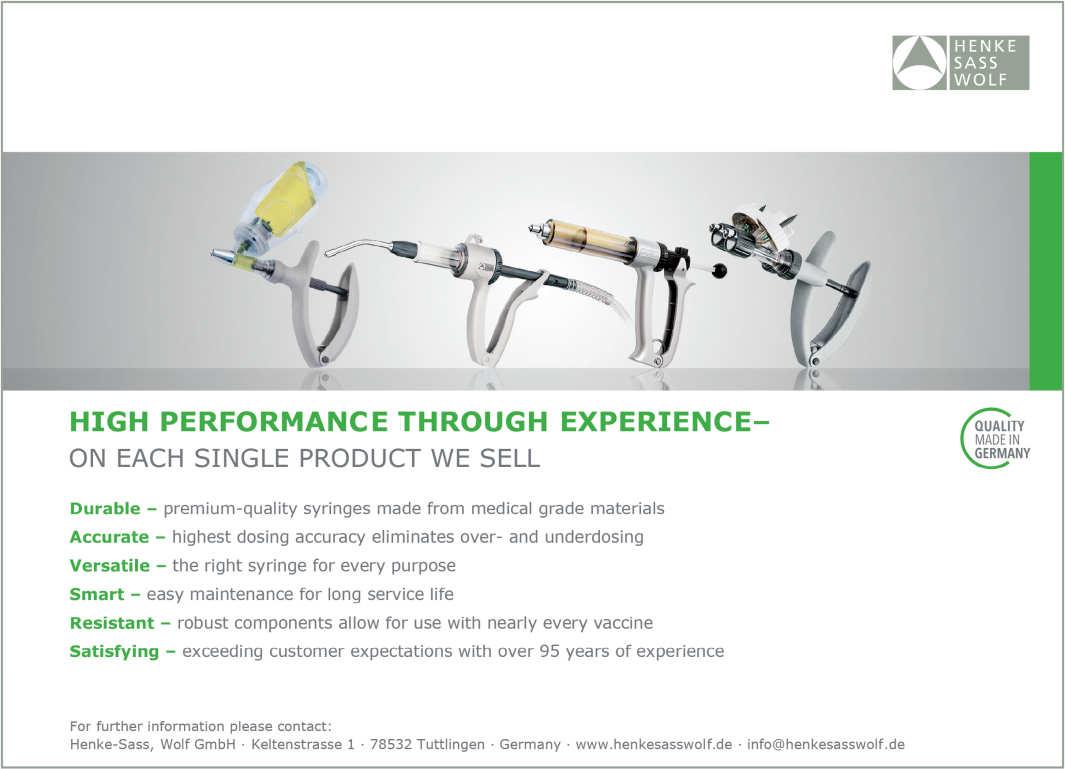
The World Bank’s board of executive directors recently approved a US$82mn loan towards the adoption of global best practices for animal health management to prevent, detect, and respond to endemic zoonotic, transboundary, and emerging infectious diseases. It will strengthen India’s One Health approach, which recognises that people and animals are connected with their shared environment.
“The new programme will help reduce the risks of animal disease outbreaks by improving disease surveillance and veterinary services in the livestock and wildlife sectors,” said Auguste Tano Kouame, the World Bank’s country director for India. “At least 2.9 million livestock farmers will have increased access to improved animal health services in the participating states of Assam, Karnataka, Maharashtra, Odisha, and Madhya Pradesh.”
“In India, around 68% of the workforce relies on farming and remains in close contact with domestic animals and poultry, thereby becoming frequently exposed to
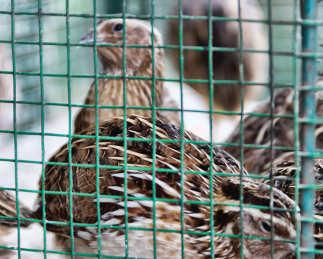
sick or infected animals,” said Hikuepi Katjiuongua, Adarsh Kumar and Anupam Joshi, the task team leaders for the programme. “By supporting evidence-based policies on animal disease and zoonoses management, it will address food safety in livestock value chains.”
Through state-of-the-art laboratories, the programme will strengthen collaboration and data sharing with the human health sector. ■
FAR EASTERN AGRICULTURE • Issue Three 2023 LIVESTOCK 11 www.fareasternagriculture.com
The World Bank has approved a US$82mn loan towards the adoption of global best practices for animal health management.”
The new programme will help reduce the risks of animal disease outbreaks.
Image Credit: Adobe Stock
Insects emerge as future building blocks of aquafeed

Research has shown a remarkable link between insect meal consumption and enhanced growth performance in numerous aquaculture species.
THE SURGE IN global population, which is expected to reach nearly 10 billion by 2050, has also been accompanied by a rise in demand for animal protein production.
Fish is often seen as the cheapest and most accessible source of animal protein, with aquaculture being a major contributor to global fish for food. Despite its popularity however, rising feed costs resulting from overdependence on ingredients such as fishmeal and fish oils have managed to threaten the sustainability of the aquaculture sector. Recent years have seen conventional fish meal being effectively replaced by sustainable alternatives such as insects, bacteria and organic by-products. Among these, insects seem to have claimed the spotlight, owing to their ease of production and wide application in aquaculture.
Studies have shown a remarkable link between insect meal consumption and
enhanced growth performance, nutrient utilisation, antioxidant capacity, immune response as well as disease resistance in numerous aquaculture species. In addition, insects are also well known for the low carbon footprint associated with their production. Moreover, unlike animals, the feed conversion rate and GHG emissions of insects at specific temperatures are much lower, since they do not use energy to maintain their body temperature within a strict range. Mechanisms have also been identified to further enrich the nutritional value of insects, in turn making them an
effective aquafeed ingredient. Examples of insects that are most commonly utilised in aquafeed include the black soldier fly, yellow mealworm and the common housefly.
Japan's move towards a sustainable future In countries like Japan, the price of imported fishmeal has witnessed a significant increase, and is expected to continue rising in the future. The country, well known to be the second largest user of fishmeal in the world, has a growing need for solutions to develop alternatives to imported fishmeal. In March 2023, Japanese integrated trading and investment business coglomerate, Marubeni Corporation, signed a letter of intent to collaborate in order for French-based insect protein and natural fertilisers company, Ÿnsect, to enter the Japanese market. Marubeni and Ÿnsect will contribute to the establishment of a sustainable aquaculture industry and food supply chain in Japan, where the consumption of edible fish and shellfish is one of the highest in the world. Tokyo-based electric services company,
AQUACULTURE 12
www.fareasternagriculture.com
Insects are well known for the low carbon footprint associated with their production.”
FAR EASTERN AGRICULTURE • Issue Three 2023
As tropical species, black soldier flies grow quickly and efficiently.
Image Credit: Adobe Stock
Sumitomo Corporation, has also recently signed a Memorandum of Understanding (MoU) with sustainable animal feed ingredient manufacturer, Nutrition Technologies, to allow its products to be distributed in the Japanese market for use in a range of sectors, including pet food and aquafeed products. The Singapore-based company sees this as an exciting opportunity to extend its commercial reach to Japan. Nutrition Technologies' products are widely recognised as being sustainable since they are made from Black Soldier Fly Larvae (BSFL). Moreover, the utilisation of low energy tropical production technology, is what makes the company stand out from other insect-based product manufacturers.
Using a combination of beneficial microbes and BSFL using a low-energy, zero-waste production model to grow their insects, the larvae are reared on clean and traceable agro-industrial by-products. As a tropical species, the BSFL grow quickly and efficiently, meaning that very little energy is required to grow or breed the flies. "This distribution agreement not only secures supply for our existing customers and the strength of demand we have for future production, but emphasises our commitment to the success of Nutrition Technologies and underlines the strategic alignment between the two companies. We envisage a bright future where the two businesses can grow together,” said Masahito Uno, general manager, Life Sciences Division, Sumitomo Corporation.
Insects as partial or complete meal replacements
A study carried out in 2020 aimed to investigate the partial (25%) replacement of fishmeal with insects such as house cricket and superworm in the diet of the Eurasian perch, a carnivorous species of fish with a high protein requirement. Despite having impact on some growth parameters, the study concluded that these insects clearly had the potential to partially (25%) replace fishmeal in aquafeeds. The study also highlighted that fish feed had to be specifically designed for each species in order to meet its nutritional demands.
In 2021, another study was conducted to investigate the effects of completely (100%) replacing dietary fishmeal with Tenebrio molitor (TM) larvae meal in the diet of rainbow trout, on fish gut and skin microbiota. The study concluded that TM larvae could be used as a valid alternative animal protein to replace fishmeal in aquafeeds. Apart from slight gut and skin microbiota changes, no other negative effects were observed in rainbow trout following complete substitution of fishmeal.
Despite their advantages however, introducing insects in aquafeed can have detrimental effects on meal digestibility and growth performance in fish. This is due to the presence of chitin, a nonprotein nitrogen molecule found in most insect cuticles. In addition to this, the existence of toxic compounds can negatively affect fish physiologically, by lowering their growth and altering hematological parameters. To tackle these challenges, chitin can be removed by supplementation with chitinase/chitinolytic-producing bacteria. The overall amino acid content can also be improved by a method called defatting.
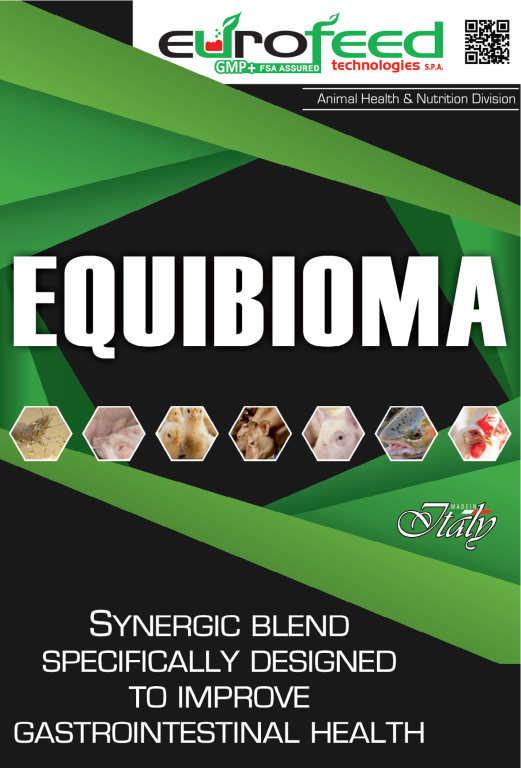
As a future perspective, the insect industry must greatly increase its production capacity, given the current high insect feed prices. The bioconversion technique for insect production is one of the best sustainable solutions to food security. In this sense, waste is a valuable resource for producing high-quality protein (insect meal) for the food system. As a result, the technology produces zero waste and lowers the need for expensive protein sources such as soy meal and fishmeal in aquafeed. Moreover, the potential of insects to use agro-industrial and plastic wastes can greatly contribute to combatting pollution-related environmental problems. ■

FAR EASTERN AGRICULTURE • Issue Three 2023 AQUACULTURE 13 www.fareasternagriculture.com
The bioconversion technique for insect production is one of the best sustainable solutions to food security.”
Ÿnmeal is a protein-rich ingredient formulated with Molitor larvae, which is perfectly suitable for the nutrition of farmed fish and shellfish.
Image
Credit: Marubeni Corporation
Sowing the seeds for oil palm success
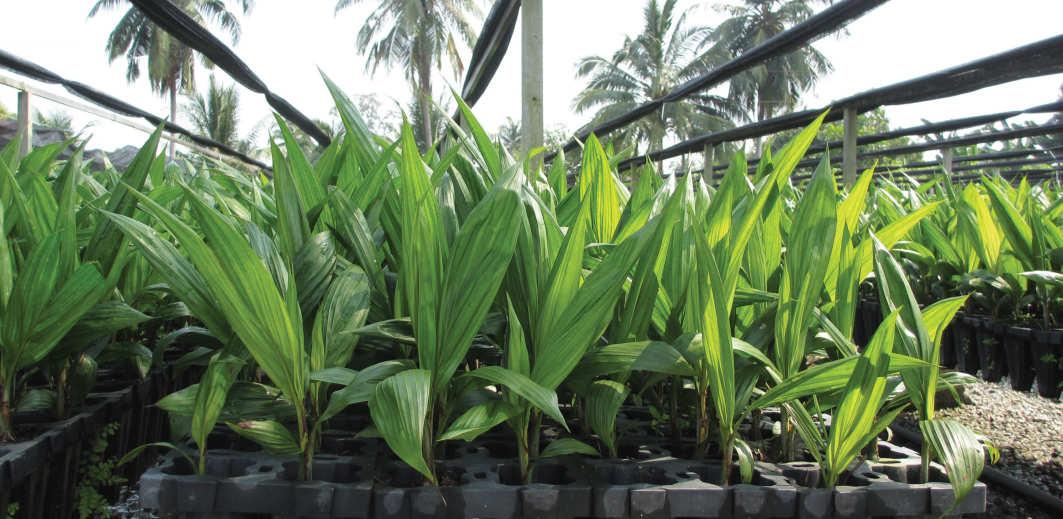
ALTHOUGH OIL PALM plantations in Southeast Asia are some of the most recently established in the world, the roots of oil palm go way back into the humid lowlands of tropical Africa where the African oil palm (Elais guineensis) originates.
Like most tropical tree crops, including rubber and cocoa, oil palm was originally exploited by ‘gatherer’ communities, who picked nuts from wild palms. At least 600 years ago, long before European colonisation started in West Africa, oil palm was exploited throughout the region. In the latter half of the nineteenth century, enterprising communities began to cultivate oil palm by using seed from wild trees. This was gradually extended with the development of plant breeding technologies to produce today’s high yielding hybrids.
The success of oil palm transplanted thousands of miles away in Southeast Asia is a much more recent story. It began with four African seedlings, two routed through Bourbon (Réunion) and two via
Amsterdam that were planted in the Botanical Gardens at Bogor on Java in 1848. Demonstration plots of oil palm derived from these trees were established in Java and Sumatra in the following years. The first industrial plantation was established in 1911 on Sumatra by an experienced Belgian (M. Adrien Hallet). By 1925, there were more than 30,000 ha of oil palm on Sumatra and 3,400 ha in ‘Malaya’, marking the very beginnings of the mighty oil palm industry in modernday Malaysia.
Basically, there are three biotypes within the species Elaeis guineensis, distinguished by the structure of the pulp and the shell. This in turn determines palm fruit quality and its economic importance. The three main types of oil palm within the species are:
• The dura type which possesses a thick shell of 2-8 mm thickness and a relatively small pulp comprising some 35-70% of the nut.
• The pisifera biotype which lacks a shell.
• Tenera, a natural hybrid of dura and pisifera with a thin shell (0.5-4.0 mm thickness) has an extremely high proportion of pulp that exceeds 90%.
Tenera is further classified by colour of its fruit as: a) nigrescens with violet to black unripe fruits and ripe fruits with a brown or black cap, b) virescens having green unripe fruits ripening to reddish orange, and c) albescens without the reddish colour, because it lacks carotenoid pigments.
14
CROPS
Germination of oil palm seeds is no easy business. Dr. Terry Mabbett sheds light on the two vital steps required for the production of germinated seeds for planting.
www.fareasternagriculture.com
The tenera biotype which combines a thin shell and a high proportion of pulp is most commonly grown on oil palm plantations.”
FAR EASTERN AGRICULTURE • Issue Three 2023
The oil palm nursery.
Image Credit: Omex
The tenera type usefully combines a thin shell (easy to crack during processing), and a high proportion of pulp. It is the biotype, now most commonly grown on commercial oil palm plantations, with the nigrescens dominant fruit type, as a series of commercial hybrids developed for high oil content.
But with plant breeding and the use of sophisticated hybrids come restrictions and responsibilities related to the selection and germination of seeds. It is pointless for producers to ‘save their own seed’ for these will just produce a mixture of sterile piserfa, dura and tenera palms that offer poor performance compared with the improved plant material of the previous (parental) generation.

What’s more, seeds of oil palm are slow to germinate with a low success rate and a lengthy pre-germination period. Germination of oil palm seeds is no easy business and requires heat treatment so that germination is synchronised and the seeds ‘all’ produce healthy first shoots (plumules) and first roots (radicles) at the same time. It is not a procedure for the small grower, but one that is best done by a central authority or large plantation which then sells on germinated seeds ready for planting to other growers.
There are two vital steps: a) breaking of dormancy and b) germination induction, that are required for the production of germinated seeds for planting. Both are best carried out using a procedure called ‘dry heat treatment’ with seeds in polythene bags.
(0.2 mm thickness) to give approximately 1,000 – 1,500 seeds per bag. Each bag is meticulously ‘sealed’ by closing the end with a series of sequential folds, finally securing it with heavy-duty adhesive tape. Bags are loaded onto the shelves and treated to a consistent temperature of 39°C over 60-80 days (depending on the type of seed).
Alternatively, growers can conveniently use self-made plastic bags from a 69 cm wide 500-gauge flat tube. This is cut into 60 cm lengths, with one cut edge sealed to make a bag. These bags are filled with seeds and the open end is secured with a strong elastic band.
Germination Induction
At the end of the 80-day heat treatment period, seeds are re-soaked for five days, with a daily change of water. Seeds are then dried under the shade for several hours until they transform from a shiny black to a dull-dark colour. This surface change signifies regaining of moisture to the desired level. Seeds are now returned to the polythene bags, which are sealed as before and placed in a cool environment. Bags are inspected and sorted once every seven days to remove seeds that have germinated (i.e. those showing an emerged radicle or at the white spot stage). Seeds that have not yet germinated are lightly sprayed with water and returned to the bag. Generally speaking, there is a delay of some 10-20 days after the 80-day treatment before germination gets underway. From then on, germination will be rapid and virtually complete within another 10-15 days. ■
The Germinator
Dormancy break and germination induction are carried out in a germinator at specific temperatures and seed moisture levels, for varying lengths of time.
A typical germinator comprises a separate and enclosed heated space for breaking dormancy and an associated ‘cool’ area where seeds are placed for germination, all within a purpose-designed building.
The isolated, heated area comprises an enclosed chamber, equipped with double glazed windows, double walls with 13 cm space, and a double layered ceiling, all designed to insulate the structure and maintain the intensity and consistency of heat required. Inside are 60 cm-wide slatted shelves, 35 cm apart, sufficient to support 10-12 plastic bags per metre length of shelf. Each bag will contain some 1,500 seeds. The germinator is heated by conduction and convection via hot water pipes or electric heaters and is always thermostatically controlled.
Breaking dormancy
On arrival at the germinator, seeds are given identification codes to distinguish between hybrids or seeds obtained from an individual cross. They are held in an air-conditioned room in darkness at ‘room’ temperature until required for heat treatment. At this stage, seeds have a moisture content of 9-10% weight/weight, and require daily soaking for seven days with complete daily renewal of the water. Soaking and several hours of drying under shade restores the seeds to the higher moisture level required for breaking of dormancy using dry heat treatment. Seeds are loaded into 50 x 60 cm plastic bags
FAR EASTERN AGRICULTURE • Issue Three 2023 CROPS 15 www.fareasternagriculture.com
Germination of oil palm seeds requires heat treatment so that germination is synchronised, and all seeds produce healthy radicles and plumules at the same time.”
ANNUAL AGRICULTURAL BUYERS’GUIDE
Section One - Supplier listings by categories
Section Two - List of suppliers
Section Three - Contact details of agents in Asia
Section 01
2 0 2 3 PLEASE
Additives
Eurofeed Technologies S.p.A.
Intraco Ltd. n.v
Unipoint AG
Analytical Services
Omex Agrifluids Ltd.
Animal Health
Eurofeed Technologies S.p.A.
Henke-Sass, Wolf GmbH
Unipoint AG
Aquaculture
Eurofeed Technologies S.p.A.
Biological Crop Protection
Omex Agrifluids Ltd.
Biotechnology
Omex Agrifluids Ltd.
Concentrates
Eurofeed Technologies S.p.A.
Intraco Ltd. n.v
Disinfectants
Eurofeed Technologies S.p.A.
Intraco Ltd. n.v
Egg Grading and Packing
NECTRA SAS
Egg Handling
NECTRA SAS
Evisceration, Portioning
Marel Poultry BV
Exports
Eurofeed Technologies S.p.A.
Henke-Sass, Wolf GmbH
Feed
Eurofeed Technologies S.p.A.
Unipoint AG
Fertilizers
Omex Agrifluids Ltd.
Formulation Agents
Omex Agrifluids Ltd.
Fumigation
Eurofeed Technologies S.p.A.
Hatchery and Incubation
Equipment
NECTRA SAS
Health Products
Eurofeed Technologies S.p.A.
Henke-Sass, Wolf GmbH
Unipoint AG
Housing Intraco Ltd. n.v
Laboratory Equipment
Henke-Sass, Wolf GmbH
Micronutrients
Omex Agrifluids Ltd.
Minerals
Omex Agrifluids Ltd.
Mixing
Eurofeed Technologies S.p.A.
Mould Inhibitors
Unipoint AG
Odour Control
Unipoint AG
Pest Control
Omex Agrifluids Ltd.
Plant Growth Regulators
Omex Agrifluids Ltd.
Premixes
Eurofeed Technologies S.p.A.
Intraco Ltd. n.v
Processing
Marel Poultry BV
Seaweed Extract
Omex Agrifluids Ltd.
Slaughtering Equipment
Marel Poultry BV
Sorting Equipment
Marel Poultry BV
Supplements
Eurofeed Technologies S.p.A.
Unipoint AG
Ventilation
TPI - Polytechniek b.v
Ventilation & Control
Equipment
TPI - Polytechniek b.v
Veterinary Equipment
Henke-Sass, Wolf GmbH
Veterinary Instruments
Henke-Sass, Wolf GmbH
Vitamins
Eurofeed Technologies S.p.A.
Weighing Equipment
Marel Poultry BV
Compact Seeds and Clones SA
PO Box 30-1000
Costa Rica, San José, Avenida 16
Calle 20-24
Edificio Grupo Agroindustrial Numar
Costa Rica
Tel: +506 2284 1120
Web: www.asd-cr.com
E-mail: sales@asd-cr.com

Eurofeed Technologies S.p.A.
VIA LUIGI EINAUDI 12
Brandico (BS), 25030
Italy
Tel: +39 0306864682 / +39 0309973064
Fax: +39 030 6866560
Web: www.eurofeed.it
E-mail: marketing@eurofeed.it
Eurofeed Technologies S.p.a. is an Italian Company that produces and trades feed additives all over the world. We are GMP+Certified.
Eurofeed Technologies’ portfolio includes: Acidifiers-Antimicrobials-AntioxidantsAromas-Enzymes-Energising-ElettrolyteMicotoxin Binders-Mold Inhibitors-Natural Adjuvant In Coccidiosis Prevention-Natural Diarrhea Prevention-Natural Growth Promoter-Nucleotides-Organic Trace Elements-Pellet Binders-Pet FoodSanitizingVegetable Protein ConcentratesVitamins.
Henke-Sass, Wolf GmbH

Keltenstraße 1
Tuttlingen
78532
Germany
Tel: +49 7462 94660
Fax: +49 7462 94665000
Web: www.henkesasswolf.de
E-mail: info@henkesasswolf.de
Agents:
Indonesia - Pesona Scientific
Korea - Yushin Corporation
Philippines - P & J Agricultural Trading
Taiwan - Ennchih Co. Ltd.
Intraco Ltd. n.v
Jordaenskaai 24
Antwerp
2000
Belgium
Tel: +32 3 2269850
Fax: +32 3 2269852
Web: www.intraco.be
E-mail: intraco@intraco.be
Marel Poultry BV
PO Box 118
Handelstraat 3
Boxmeer
5830 AC
Netherlands
Tel: +31 48 5586111
Fax: +31 48 5586222
Web: www.marel.com/poultry
E-mail: info.poultry@marel.com
Marel is the world’s leading supplier of innovative poultry processing systems and services for all processing capacities, from 500 to 15,000 bph, and for all process steps, from live bird handling to further processing. In cooperation with our customers we innovate the industry, driving excellence in performance, food safety and sustainability.
Agents:
China - Marel Beijing Trading Co., Ltd.
Singapore - Marel Singapore Pte Ltd
Thailand - Marel Poultry SE-Asia
Vietnam - Marel Vietnam

EXPERT ADVICE & RESPONSIBLE SOLUTIONS CONSEILS SPÉCIALISÉS & SOLUTIONS RAISONNABLES BUYERS’ GUIDE 16 www.fareasternagriculture.com FAR EASTERN AGRICULTURE • Issue Three 2023
MENTION FAR EASTERN AGRICULTURE WHEN CONTACTING YOUR SUPPLIERS
Section 02
NECTRA SAS
32 Rue Capitaine Louis de Menou
29420 PLOUVORN, France
Tel: +33 (2)98725459
Fax: +33 (2)98687377
Web: www.nectra-com.fr
E-mail: contact@nectra-com.fr

NECTRA design, build and provide high tech equipment and complete Taylor made solutions for hatchery automation as well as for Laboratory. From traditional hatchery automation such as eggs and chick processing lines, Stackers, De-stackers, Separation, Counting, Carrousels, Transfer, Washer and Waste management. NECTRA is a leader in specialized functions that integrate biomechanical technologies such as Inovo vaccination, egg candling, robotics artificial vision, new contact less air chamber detection and sexing. Our R&D team provides our technology platform to other companies.
Agents:
China - NECTRA
Japan - NECTRA
Korea - NECTRA
China
Marel Beijing Trading Co., Ltd.
No. A608 Yeqing Plaza Building
Yeqing Plaza, #9 Wangjing Nort
Beijing
100102
Tel: 86 (0)10 8947 2150
E-mail: service.cn@marel.com
NECTRA
E-mail: ygb.bj@163.com/contact@nectracom.fr
Indonesia
Pesona Scientific
Komplek Kopo Mas Regency
Block 8-F Bandung, West Java
40225
Tel: +62 22 5430583
Fax: +62 22 5430314
Web: www.pesonascientific.com
E-mail: cvpesona@bdg.centrin.net.id
Omex Agrifluids Ltd.
Saddlebow Road
King’s Lynn
Norfolk, PE34 3JA
United Kingdom
Tel: +44 1553 817500
Fax: +44 1553 817501
Web: www.omex.com
E-mail: agrifluids@omex.com
PEL-tuote Oy

Seppälänsalmentie 181
Rantasalmi 58900
Finland
Tel: +358 40 5688115
Web: www.pel-tuote.fi
E-mail: jens.koellner@pel-tuote.fi
TPI - Polytechniek b.v
De Steenbok 24 ‘s-Hertogenbosch
5215ME
Netherlands
Tel: +31 73 6569194
Fax: +31 73 6566933
Web: www.tpi-polytechniek.com
E-mail: info@tpi-polytechniek.com

Unipoint AG
Gewerbestrasse 2
Ossingen 8475
Switzerland
Tel: +41 52 3052041
Fax: +41 52 3052042
Web: www.unipoint.ch
E-mail: info@unipoint.ch
Klinofeed® is the unique feed-additive with a high capacity to bind Ammonium and Mycotoxins. Klinofeed is the original product, EU-registered by Unipoint AG, as feed additive No.: 1g568.
Please ask us about Klinofeed: info@unipoint.ch
Section 03
Japan
NECTRA
E-mail: tanaka.nectra@gmail.com/contact@nectra-com.fr
Korea
NECTRA
South Korea
E-mail: sseun@unitel.co.kr/contact@nectracom.fr
Yushin Corporation
712, Bongeunsa-ro 129-1 Nonhyon-Dong 751 Bldg. Kangnam-Ku
Seoul
135-010
Tel: +82 2 5682525
Fax: +82 2 5693113
E-mail: ryushin@netsgo.com yushincorp@nate.com
Philippines
P & J Agricultural Trading
184, Dr. Sixto Antonio Ave. Pasig City, Metro Manila
Tel: +63 2 86410053
Fax: +63 286410054
Web: www.pjagri.net
E-mail: info@pjagri.net
Singapore
Marel Singapore Pte Ltd
21 Jurong Gateway Road
#04-05 CPF Jurong Building
608546
Tel: +65 (0) 6281 2878
E-mail: servicesingapore@marel.com
Taiwan
Ennchih Co. Ltd.
No.310, Chung Shan S. Rd.
Taoyuan Hsien
Tel: +886 34 758168
Fax: +886 34 753803
E-mail: ennchih3@ms6.hinet.net
Thailand
Marel Poultry SE-Asia
97, Rama IX Soi 59 Rama IX Road
Suanluang Sub-District Suanluang District
Bangkok
10250
Tel: +66 24233656/9
Web: www.marel.com/poultry
E-mail: info.poultry@marel.com
Vietnam
Marel Vietnam
10 Hung Phuoc 3 internal road Ho Chi Minh City
Tel: +84 8 5412 8778
Web: ww.marel.com/poultry
E-mail: info@marel.com
FAR EASTERN AGRICULTURE • Issue Three 2023 BUYERS’ GUIDE 17 www.fareasternagriculture.com
Hayleys Agriculture to enhance Sri Lanka’s grain processing industry
Japanese grain dryers from Shizuoka Seiki could replace traditional drying methods in the South Asian country.
IT IS IMPORTANT to remove excess moisture from grains in order to prevent the onset of fermentation and degenerative phenomena.
There are three main phases in this process, which involves complex drying dynamics. In the first phase, the water present inside the kernel is extracted and pushed towards the outer wall, and in the second phase, the evaporation of water by the air surrounding the kernels takes place. Finally, in the third phase, the air rich in humidity is expelled externally.
Grain dryers, which are sophisticated machines used for this process, typically consist of a heat generator with an aeration system, a desiccant body that contains the cereal to dry, a panel with the control, regulation, and safety devices of the entire system, along with any complementary equipment designed for accumulating, cleaning, weighing, and handling the product.
Conventionally, grains are dried in the sun, which is a method often used in countries such as Sri Lanka. The country is still heavily reliant on sun-drying methods.
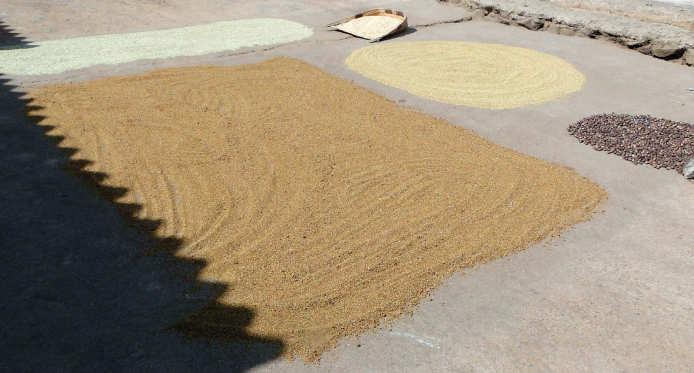
However, sun drying can expose grain to loss from birds, insects, and other animals, damage from rain or other weather events, and contamination from dirt, dust and insects that can diminish the value of the crop. Losses associated with weather may be growing more severe due to changes in climate. Thus, machine dryers can eliminate drying losses, but improper temperature control during mechanical drying can reduce grain quality and germination rates.
To enhance grain drying methods in Sri Lanka, Hayleys Agriculture has partnered with Shizuoka Seiki Japan to introduce its grain dryers in the country. The dryer is equipped with a specially designed bucket elevator and screw system to minimise any mechanical damage to the grain. It also ensures an even distribution of grain within the dryer to enhance the consistency of the process. Another key feature is an improved
online grain moisture analyser that provides highly accurate and continuous drying parameter readings, which allows for better control of the process. The compact design of these dryers makes installation, maintenance, and operation extremely easy and user-friendly. Sumith Herath, director and SBU head of agri equipment division of Hayleys Agriculture said, “Sri Lankan farmers will be able to get firsthand experience of the fine mix of trustworthiness and reliability that Shizuoka has gained worldwide.” ■
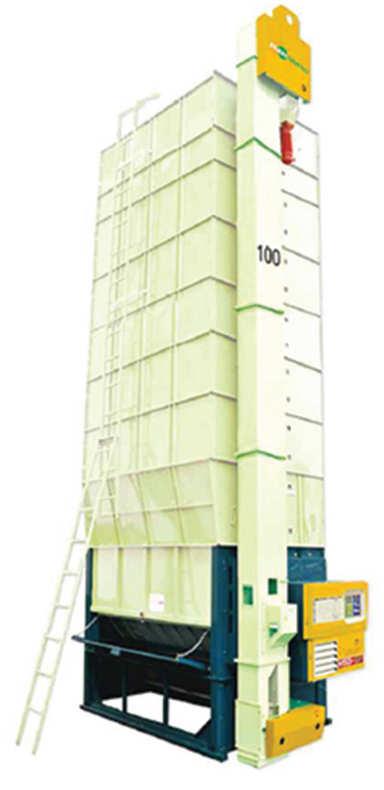
EQUIPMENT 18
www.fareasternagriculture.com FAR EASTERN AGRICULTURE • Issue Three 2023
The Shizuoka circulation type grain dryer, with its advanced Japanese technology, is set to revolutionise the grain processing industry in Sri Lanka.“
The dryer is equipped with a specially designed bucket elevator and screw system to minimise any mechanical damage to the grain.
Image Credit: Shizuoka Seiki
Image Credit: Adobe Stock
Sun drying can expose grains to damage from weather events, and contamination from dirt, which can dimnish the value vof the crop.
Electric tractors to reduce farm emissions
THE FUTURE OF farming may lie in electric tractors, which are fast gaining popularity in Asia, thanks to a number of advantageous features.
In comparison to traditional tractors, which use either diesel or gasoline, the electric variants are powered by rechargeable electronic batteries that may be plugged into a socket to obtain a new supply. After 6000 operating hours, the majority of diesel tractors require a complete engine rebuild, which may be nearly as expensive as a new tractor. But an ordinary person can change the batteries in an electric tractor, which may last for 5-10 years. The main benefit of electric tractors over diesel ones is that they do not directly contribute to carbon emissions or other forms of air pollution.
They do not make noise while in use, and don’t emit smoke, all the while offering
a cost effective alternative, as they are priced the same as traditional tractors.
The diesel tractor has 35% efficiency when compared to the 80% efficiency of charging or discharging the batteries of electric tractors. Electric tractors also have fewer moving parts, meaning fewer things that go wrong. So repairing and maintenance costs reduce and the tractor works for longer periods.
Monarch Tractor, the maker of the fully electric MK-V tractor, launched its Founder Series production line at its headquarters and manufacturing facility in Livermore, California. These tractors use renewable technology and have zero tailpipe emissions. They are driver optional packed with safety features including rollover and collision
prevention. The MK-V also collects and analyses crop data daily, apart from being a very powerful machine.
Launched in 2020, the MK-V is setting a new standard for farm safety, by including technology that will help prevent farm-related injuries whether the tractor is being driven or performing driverless tasks. Each MK-V is produced with collision prevention, human detection, and power take-off (PTO) protection. The tractor will stop moving if it detects a human within six-feet of the tractor, and the PTO will automatically shut off if the system detects a person within one foot of the PTO.
Foxconn, which manufactures these tractors, completed production in May this year. Foxconn began the commercial production of Monarch Tractor’s MK-V Series in the first quarter of this year as scheduled. After the official delivery, the next steps of the partnership include continued tuning of production line(s) and material sourcing in preparation for full-rate production. ■

FAR EASTERN AGRICULTURE • Issue Three 2023 EQUIPMENT 19
Foxconn’s latest range of electric tractors are promising to make farming more sustainable.
www.fareasternagriculture.com
The tractors are powered by rechargeable electronic batteries.”
The tractors include safety features to protect against farm injuries.
Image Credit: Foxconn
Enhancing the efficiency with electrolytic sprayers

ELECTROLYTIC SPRAYING IS an advanced technique used in precision agriculture and food processing. It aims to optimise pesticide usage by increasing efficiency and bio-efficacy. Applying electrostatic principles offers several benefits such as protective coatings on fruits and vegetables to resist microbial attacks, extending their transportation life, and improving food safety.
The process works by utilising the electric field to attract charged droplets towards the target crop surface. There are two cases of attraction: first, charged droplets are drawn to the plant surface, facilitating their movement towards the crop. Second, when the droplets are close to the crop, attractive forces overcome gravitational, inertial, and drag forces, redirecting the droplets towards the target plant and promoting adhesion.
Electrostatic spraying offers several advantages over conventional spraying methods. Research has shown that it achieves superior coverage of challenging targets, ensuring better distribution of the sprayed material. Additionally, it significantly reduces water consumption, often requiring up to 10 times less water compared to conventional spraying techniques.
The benefits extend beyond efficiency and cost-effectiveness. Electrostatic spraying offers increased efficacy and improved safety by minimising damage to the environment. The targeted application of pesticides directly to pests reduces run-off and overspray, making it safer for workers and reducing the potential for environmental contamination. However, there are some drawbacks. One notable challenge is the initial cost associated with the equipment and setup
required for this method. The sophisticated technology involved can make it a costly investment, which may pose a barrier for some users.
Combining agricultural vehicles and electrostatic spray technology offers improved pest control, reduced water consumption, and enhanced productivity. It proves to be a promising solution for efficient crop protection in agriculture.
Evolution of electrolytic spraying
AgNext Technologies introduced the esprayer last year – a pioneering electrostaticbased pesticide sprayer. It ensures comprehensive crop coverage with zero wastage or excessive dripping. The e-spray atomises liquid, charging it electrostatically to attract and coil around leaves and crops, while also recording geolocation.
Equipped with an IoT device, the esprayer enables real-time tracking of spraying activity. Farmers can monitor the movement of personnel via GPS, track sprayed area, measure chemical consumption, and prevent malpractices. Portable and available in various capacities, it minimises soil toxicity and water
TECHNOLOGY 20
Exploring the benefits and applications of electrolytic spraying to optimise pesticide usage and enhance crop yield.
www.fareasternagriculture.com
The benefits extend beyond efficiency and cost-effectiveness.”
FAR EASTERN AGRICULTURE • Issue Three 2023
Electrolytic spraying offers several advantages over conventional methods.
Image Credit: Adobe stock
contamination, optimising pesticide presence.
Not only advantageous to farmers and consumers, the e-sprayer benefits sprayers themselves, preventing long-term lung diseases by ensuring that charged particles do not enter their respiratory system.

Highlighting the new offering, Taranjeet Singh Bhamra, founder and CEO at AgNext Technologies said, “E-spray is a breakthrough technology developed by AgNext. It is an electrostatic sprayer designed in a way to give maximum benefit to the farmers. We are working towards developing and deploying more such technologies for rural areas that will change the lives of farmers as well as the whole agriculture landscape.”
In a similar sense, ESS's Maxcharge electrostatic sprayers look to transform agricultural spraying efficiency. Producing droplets 900 times smaller than conventional sprayers, these air-assisted electrostatic sprayers offer superior coverage. Compared to traditional sprayers, ESS
achieves more than twice the deposition efficiency, minimising chemical wastage.
In extensive university testing against conventional and air-blast sprayers, ESS demonstrated 300% better spray penetration and coverage on hidden areas and dense foliage. This comprehensive coverage reduces chemical consumption and accelerates return on investment. Growers can cut chemical costs by 25-50% while achieving effective results.
ESS sprayers effectively combat agricultural challenges, including thrips, aphids, mildew, mealybugs, blights, and listeria. Moreover, the combination of
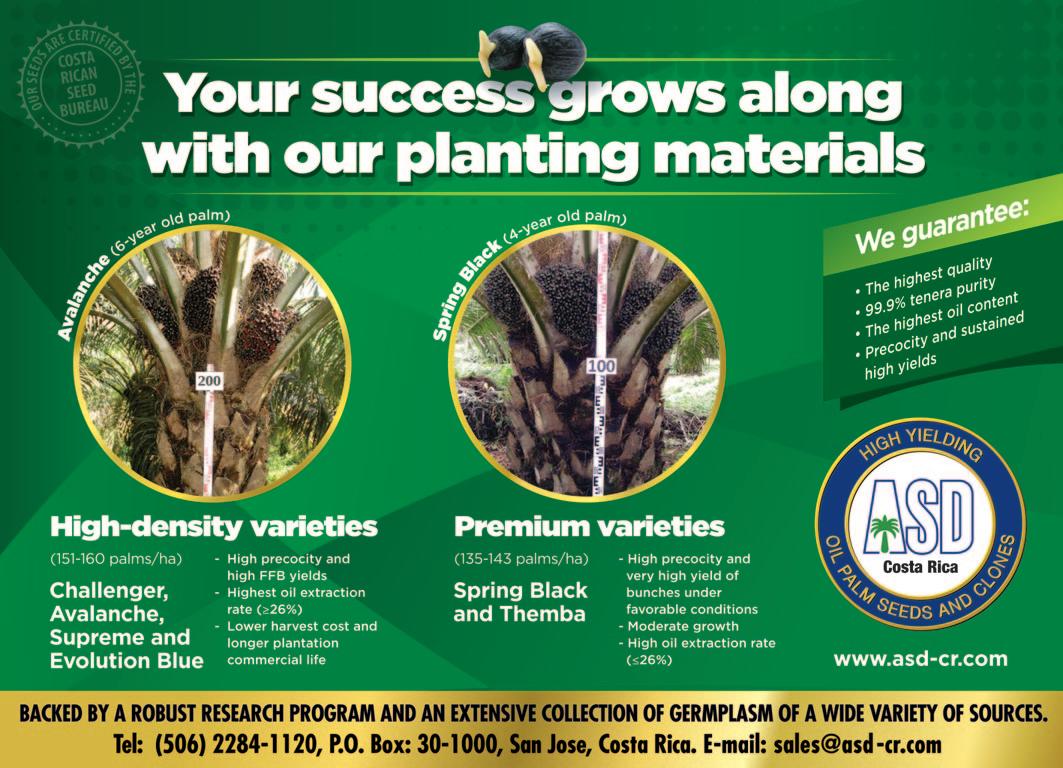
electrostatic spraying and reduced chemical usage proves successful in weed and unwanted growth control.
With ESS's Maxcharge electrostatic sprayers, growers gain unparalleled efficiency, optimal coverage, and improved pest management. These advanced sprayers drive agricultural productivity while reducing environmental impact. ■
FAR EASTERN AGRICULTURE • Issue Three 2023 TECHNOLOGY
Agriculture is an area that electrolytic spraying is looking to revolutionise with its numerous advantages.”
21 www.fareasternagriculture.com
Tractor-mounted electrolytic spraying can cover a large amount of space.
Image Credit: Adobe Stock
Topcon introduces new feed management platform options
TOPCON AGRICULTURE ANNOUNCES advances in its TAP FEED management cloud-based software platform for dairy and beef operations. Platform options now include the free TAP FEED App, and the subscription-based TAP FEED Lite and TAP Feed Pro for dairy producers. For feed advisors, consultants and nutritionists, the new TAP FEED Advisor customer management tool is also now available. “The easy-to-use feed management software is tied directly to proven feed mixer weighing technology, including mobile app and cloud integration, representing the latest evolution in modern feed management,” said Michael Stone, vice president of product development for Topcon Agriculture.
Reader Information Service Subscription form
Issue 3 2023
This is a free service, readers who wish to receive urgently further information about any product or company featured in the magazine, please complete this form and fax to: Far Eastern Agriculture on +44 (0) 20 7973 0076 or e-mail to: feag@alaincharles.com or post to: Far Eastern Agriculture, University House, 11-13 Lower Grosvenor Place, London, SW1W 0EX, United Kingdom.
Name of product and/or company Page No.
I wish to subscribe to Far Eastern Agriculture for 1 year (6 issues) starting with the next copy.
Surface Rates:1 year: £57 US$111 Euro e93
2 years: £97 US$189Euro e158
3 years: £129US$251Euro e210
Enclosed is my cheque/draft for (Cheques made payable to Alain Charles Publishing Ltd)
Please invoice
Please charge to Visa/American Express/Mastercard (please circle)
Card number
Expiry Date /
(please note we debit your account in sterling)
Name
Position
Name:
Job title: Company:
Address:
Tel: Fax:
Your organization’s product/service:
Number of employees in your organization:
Signature: Date:
Organization Address Country
E-mail
Signed Date
Send this form together with your remittance to: Far Eastern Agriculture, University House, 11-13 Lower Grosvenor Place, London, SW1W 0EX, UK. Tel: +44 (0) 20 7834 7676 Fax: +44 (0) 20 7973 0076
Subscription order can also be made via the Internet: www.alaincharles.com or email at feag@alaincharles.com
Please TICK most relevant box
Government: municipal services, diplomatic, (UN, International Agencies)
Educational/Research Institutes
Commercial Services: banking, finance, insurance
Import/Export Agents and Distributors
Farms and Plantations
Food Processing: poultry, dairy, cereal, fruit, vegetables, etc Aid Organizations Agricultural
4. Type of produce
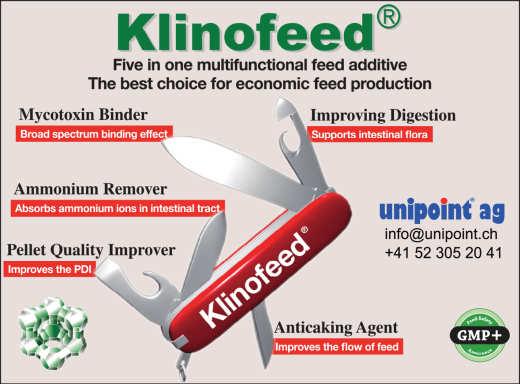
AGENDA #
Equipment
Material Manufacturers: irrigation, agro-chemicals Others: please specify: 01 03 06 08 09 11 12 13 16 01 02 03 04 05 06 07 08 09 10 11 12 13 14 15 16 17 18 19 20 Rice Grain Fruit Cocoa Coffee Cotton Rubber Palm Oil Palm Kernels Sugar Cane Feedstuffs Groundnuts Vegetables Cassava Dairy Cattle Beef Cattle Sheep/Goats Pigs Poultry Fisheries
and
22 www.fareasternagriculture.com FAR EASTERN AGRICULTURE • Issue Three 2023 LONDON OFFICE: University House, 11-13 Lower Grosvenor Place, London SW1W 0EX, UK Tel: +44 (0) 20 7834 7676 Fax: +44 (0) 20 7973 0076 E-mail: post@alaincharles.com Web: www.alaincharles.com ADVERTISE HERE! Serving the world of business For details of advertising in the classified section please contact:
New technology enables grass height to be measured from space

ORIGIN DIGITAL AND Aspia Space
on 18 July, announced a world-first technology breakthrough that could revolutionise grassland farming.
Launching in Ireland later this year as part of Origin Digital’s ‘GrassMax’ service, the new technology accurately measures the height of grass from space, offering groundbreaking insight for increasing farm productivity and profitability while also enabling organisations and businesses to verify sustainability practices in the livestock supply chain.
The potential of the new technology extends beyond agriculture. Any organisation involved in grass management could potentially benefit, from local councils monitoring grass length and cutting in parks and verges to amenity providers and estates optimising their land use.
“This is a game-changing moment for grassland farmers and the businesses that partner with them. For the first time, they can remotely and automatically calculate the quantity of grass in their fields and paddocks, on a regular basis and at scale. This enables farmers to make betterinformed decisions regarding grazing schedules, animal nutrition, and silage cuts for example, resulting in less waste and a
more stable, sustainable food supply,” said Duncan Robertson, head of R&D at Origin Digital.
Through Irish parent company Origin Enterprises, Origin Digital has unique access to a vast pool of ground-truth and field-trial data alongside a strong network of farmers and agronomic experts, which has helped them build this breakthrough measurement technology in partnership with Earth observation and AI experts from Aspia Space.
“Earth observation satellites literally provide an eye in the sky that offer the potential to monitor every single field on a regular basis. Aspia Space’s patented ClearSky technology uses a generative AI algorithm to deliver cloud-free imagery of
the ground, making satellite data more reliable, especially for agricultural applications. Through our partnership with Origin Digital, we have developed a new AI solution that uses ClearSky imagery to estimate grass height to within an accuracy of just 1.5 cm from a vantage point of nearly 700 km up in space. Not only can we map the grass height down to a resolution of 10 m and see variations across a paddock, but we can also monitor how it is changing over time. This is a great demonstration of how we can combine space imagery with ‘ground truth’ data, magnifying its power. Our algorithms allow us to provide physically meaningful insights that enable better decision making here on Earth. We are proud that this technology is being rolled out in the GrassMax product,” said Aspia Space co-founder and director of AI, Mike Smith.
GrassMax will launch in Ireland later this year, with Origin Digital and Aspia Space then planning to localise their breakthrough remote measurement technology to more countries and climates around the world, as well as developing further products that unlock innovative data insights to promote sustainable, profitable farming. ■

FAR EASTERN AGRICULTURE • Issue Three 2023 TECHNOLOGY 23
AgTech partnership announces world-first revolutionary breakthrough.
www.fareasternagriculture.com
The new technology accurately measures the height of grass from space, offering ground-breaking insight for increasing farm productivity and profitability..”
Origin Digital and Aspia Space have announced a world-first technology that offers new insight for increasing farm productivity and sustainability.
Image Credit: Origin Digital
